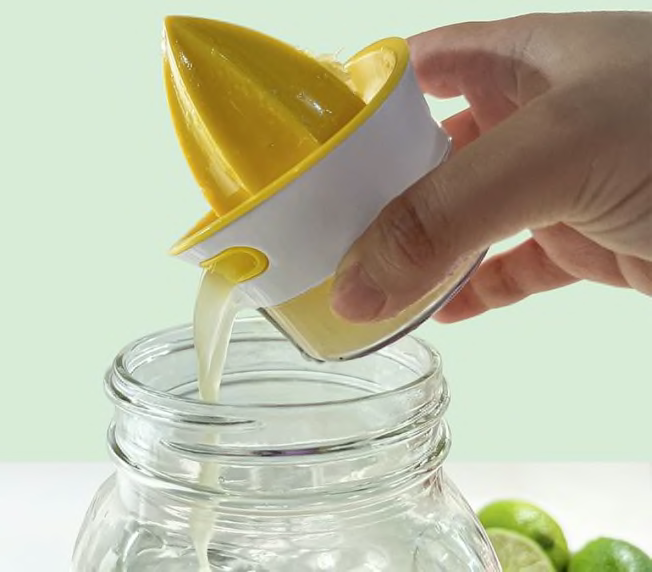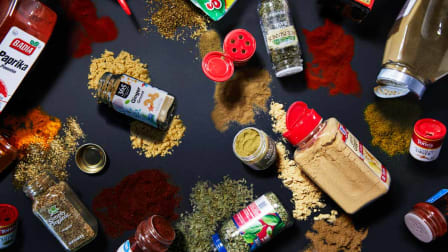Let’s Not Call It Spa Water. It’s Agua Fresca.
Latino experts share their devotion to agua fresca and its many health benefits

Earlier this summer, a TikTok content creator named Gracie Norton shared a recipe for what she called “spa water” with her nearly 600,000 followers that she then expanded into videos on the app. The series quickly generated a flood of negative comments and video responses.
Why did a refreshing drink made of water, cucumber, lime juice, and a dash of sugar create such a backlash? Because Norton’s “spa water” is actually agua fresca, a traditional Mexican drink that has long been a staple in Mexican homes and is sold widely by Latino street vendors.
“Agua fresca is a main player in a Mexican table,” says Cristina Castaneda, owner of El Mitote, a Mexican restaurant in New York City. “There is always agua fresca at every home, always refreshing, and for every member of the family.”
To some Mexican American and other Latino communities, Norton didn’t just rename a drink that’s integral to their culture, she framed it as her own idea. Norton ended up deleting the videos on TikTok after apologizing in a social media post.
At a time when people are becoming more aware of and sensitive to cultural appropriation, the incident presented an opportunity to have a conversation about why it matters.
What Is Agua Fresca?
Agua fresca can be best translated from Spanish as “fresh fruit water.” “It is very culturally important to Latin American food culture since it is prepared using seasonal, traditional ingredients,“ says Alice Figueroa, RD, founder of the nutritional service Alice in Foodieland. Traditionally, it’s consumed on a daily basis and prepared using fresh fruit, grains (rice), edible plants like flowers and seeds, legumes (pumpkin), and vegetables.
A Look at Another Food Misnomer
Agua Fresca Flavors
This drink is very important not only in Mexico but in parts of Latin America, too. Mexico has a robust set of agua frescas, varying in fruits and vegetables. The key, according to Castaneda, is to stay seasonal. “The refreshing drinks are usually made with the fruit that is available that day or the leftovers, made in a big pitcher for everyone to serve themselves,” she says. The traditional flavors are lime, cantaloupe, horchata (rice), Jamaica (hibiscus blossom), mango, orange, pineapple, tamarind, and watermelon.
“Agua fresca uses small amounts of odds and ends of fruit and turns them into a delicious drink,” says Krista Linares, MPH, RDN, founder of the nutritional service Nutrition con Sabor. And Amy Keating, RD, Consumer Reports’ nutritionist, points out that using these leftovers helps prevent food waste.
Nutritional Benefits of Agua Fresca
One of the main benefits is that it can boost your water intake and help you consume more fruit throughout the day, says Gaby Vaca-Flores, RD, founder of the nutrition and wellness education service Glow + Green. Agua frescas can be a great way to liven up your water intake and encourage you to try the various tropical fruits Latin American and Caribbean cultures use.
They’re also a way to get fiber and vitamins from fruit, says Dalina Soto, MA, RD, LD, founder of the anti-diet nutritional counseling service Your Latina Nutritionist. “Most fruits are loaded with vitamin C,” she says.
According to Vaca-Flores, vitamin C is a powerful antioxidant that can help fight free radicals in the body, boost the cellular functions of the immune system, and even promote collagen production in the skin.
“Because of its high vitamin C and other antioxidant content,” Figueroa says, “eating or drinking fruits rich in antioxidants may help support heart health, circulatory health, and cancer prevention.”
Agua frescas can also be made with edible plants (flowers), grains including rice, hibiscus leaves, and pumpkin seeds. Figueroa prefers those with a mix of fruit, legumes, and whole grains because “they provide antioxidants and vitamins found in fruits in addition to the fiber, protein, and heart-healthy fats found in legumes and whole grains.”
To Strain or Not to Strain the Fruit
The health benefits of agua frescas change slightly depending on whether you keep the pulp or get rid of it. From a nutritional standpoint, Keating says it’s best not to strain the pulp from the fruit. “If you don’t strain,” she says, “you use the whole fruit and retain the healthful fiber that would be lost otherwise.”
Agua frescas with pulp are higher in fiber than those with infused fruit flavor or don’t contain the pulp, Figueroa says. Fiber “may promote more balanced blood sugar levels, better digestion, and satiety,” she says. “Diets that are high in fiber are heart-healthy and are linked to improved cholesterol levels.”
Fruits naturally come sweetened, so be aware of how much sugar you add to your agua fresca. “You don’t need to add all the sugar that the recipe calls for, and you may find the natural sweetness is enough,” Keating says. Most recipes will have less sugar than a typical soda, which makes them a healthier choice overall.
How to Make Your Own Agua Fresca
Here are three recipes from our experts.
Agua Fresca de Limón (Lime)
Courtesy of Cristina Castaneda
Ingredients
2 liters of fresh water
Sugar or agave syrup to taste
The juice of 10 to 12 Mexican limes (or another type)
Lemon and Lime Squeezers
See Consumer Reports evaluation of 4 citrus juicers.

Photo: Giselle Medina/Consumer Reports Photo: Giselle Medina/Consumer Reports
Instructions
In a pitcher, add 2 liters of fresh water. Add the sugar or agave syrup to taste, then stir. Squeeze the limes and add the juice to the sugary water.
“Adding the sugar or agave syrup to the water first is an important step,” Castaneda says, a trick she learned from her grandmothers. “It changes the taste” when adding the citrus last. “It kind of enhances the lime flavor. If you add the sugar after, it enhances the sweet, sugary flavor.” It’s a subtle but noticeable taste.
Note that the amount of limes is to taste. For an extra “kick,” Castaneda likes to add some lime zest. Refrigerate or add ice cubes to keep cool.
Agua Fresca de Sandía (Watermelon)
Courtesy of Amy Keating
Ingredients
3½ cups of watermelon cubes
3½ cups of water
2 tablespoons of sugar
Lime
Instructions
Place the watermelon cubes, ½ cup of water, 2 Tbsp. of sugar, and the juice of half a lime in a blender and blend well until very smooth. Keating notes that using less water for the first step helps to get the melon very smooth so that you don’t need to strain it.
Add the rest of the water to the blender and blend until everything is incorporated. Makes about 6 cups.
Blender Picks
Horchata (Rice Water)
Courtesy of Alice Figueroa
Figueroa and her brother, Issac Figueroa, created this recipe after spending time exploring farmers markets in Latin America. It is inspired by Guatemalan horchata.
Ingredients
½ cup of white rice
1 cinnamon stick
2 tsp. of ground cinnamon
1 tsp. of vanilla extract
7 cups of water
¼ cup of sugar, honey, or maple syrup
Instructions
Add the rice, cinnamon stick, and cinnamon to a medium skillet. Pan-roast the rice at medium-high heat until it’s golden brown and the cinnamon is aromatic, about 3 to 4 minutes. Remove from heat.
Transfer the roasted rice mixture into a medium bowl and cover with 1 cup of water. Let it soak for at least 30 minutes to an hour (or overnight in the refrigerator).
Put the rice mixture into a high-speed blender, making sure to remove the cinnamon stick first. (Some high-speed blenders can ground cinnamon sticks very well, but others can’t.)
Add 8 cups of water and one of the sweeteners. Blend until smooth. If your blender didn’t completely pulverize the rice, sift the horchata liquid through a fine sieve, nut-milk bag, or cheesecloth. Serve immediately with ice cubes or chill in the refrigerator, where it can be kept for up to five days. Makes about 6 cups.
Figueroa’s tip: Don’t worry if the horchata separates, leaving rice powder at the bottom. Simply stir it together before serving, or strain the drink if you don’t like the grainy texture.
Agua fresca is more than just a drink to enjoy in the summer months. “On one level, agua fresca is an affordable and easily accessible beverage for people to turn to,” Vaca-Flores says. “On another level, agua fresca is comforting. It’s closely tied to family and community gatherings, whether it’s a street vendor selling agua frescas after church or serving homemade agua fresca at a family get-together.”
@consumerreports Agua fresca, which can be best translated from Spanish as “fresh fruit water," is an important aspect of Latin American food culture. #HispanicHeritageMonth #LatinXHeritageMonth #aguafresca #foodtok
♬ original sound - Consumer Reports




















